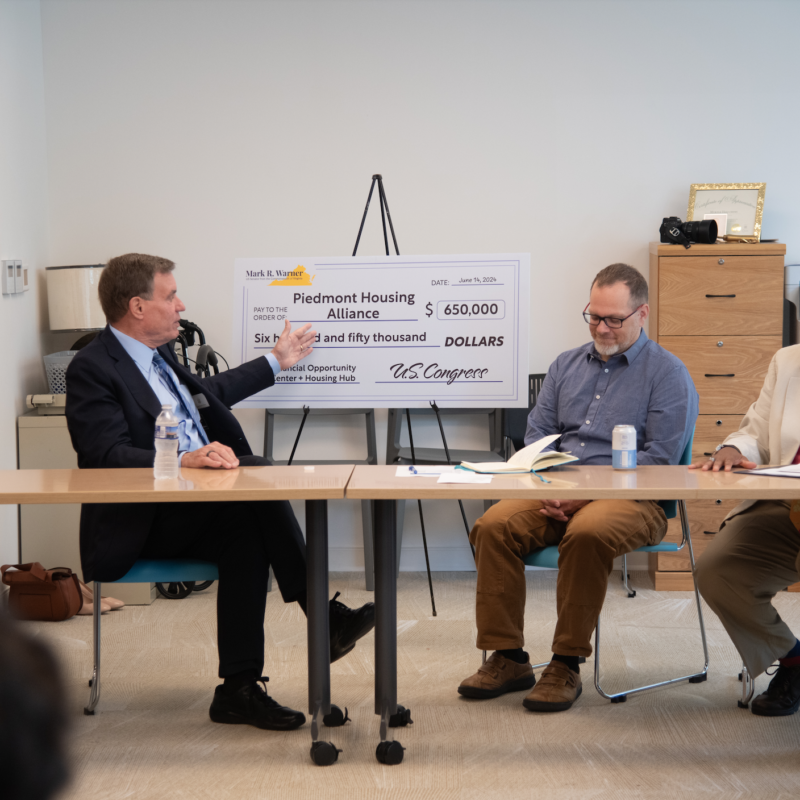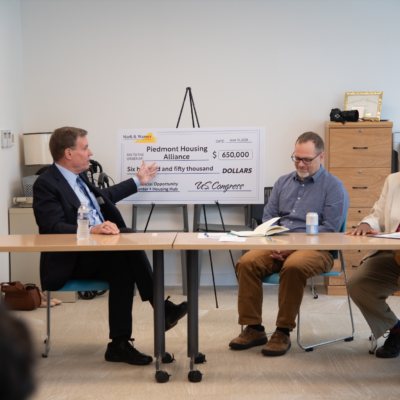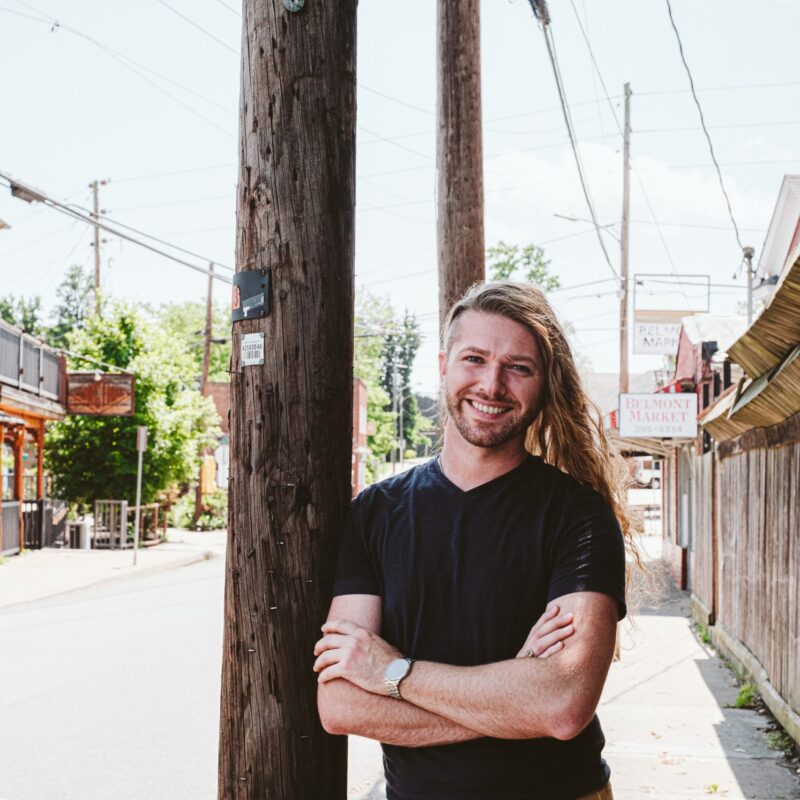With City Council’s 4-1 vote to move forward with two designs for the 250 Interchange, the ethereal Meadowcreek Parkway (MCP) lurched one more step closer to existence. Yet the city has a lot of work to do if it plans to break ground in the fall of 2008.
Here are the steps standing between the city and its fabled Parkway. Keep in mind that the MCP, while one idea, is actually three separate projects (interchange, roadway in city, roadway in county). The county process should be similar to the city’s.

When will this consultant’s rendering of the Meadowcreek Parkway interchange with Route 250 exist in real life? Maybe in a few years, maybe never.
|
McIntire Street Extended (a.k.a. MCP in city)
1. Council, VDOT complete temporary construction easements: Once formally approved by Council, easements grant Virginia Department of Transportation (VDOT) access to the land necessary to begin construction.
2. VDOT completes storm water design: This VDOT design is being reviewed by a committee of city and county staff.
3. VDOT relocates utilities: Once the right-of-way acquisition process is complete, VDOT will work with local utility companies to relocate water, gas and sewer lines.
4. VDOT solicits construction bids: On June 10, 2008, the city hopes to start the public process of soliciting bids from private contractors for the road’s construction.
5. VDOT selects contractor: Once selected, the central VDOT office issues a “Notice to Proceed,” basically a ticket to break ground and the last bureaucratic step in one hell of a 40-plus-year process.
250 Interchange
1. Consultants refine designs: Working with Rummel, Klepper & Kahl (RK&K), the firm designing the interchange, the Steering Committee will refine designs for both interchange options, designing each to 60-percent completion, leaving enough wiggle room for revision.
2. City, VDOT complete national environmental impact study: This is the project’s largest hurdle. Because the interchange is being built with federal funds, the city staff and VDOT must study and disclose the environmental impact on the surrounding land and suggest alternatives.
3. City Council gives final approval: Council won’t have a complete design to approve, but that hasn’t stopped it before. This is the last chance Council will have to view the interchange design before passing a resolution to build the damn thing.
4. VDOT approves final design: After Council has approved the interchange, the engineers at RK&K will finalize its design, then send it to VDOT for its approval.
5. City obtains right of way: City Council must iron out right-of-way issues. This should be a fairly smooth discussion: Most, if not all, of the land for the interchange is park land belonging to the city.
6. See process for MCP: The interchange must go through all five previous steps before any shovel touches dirt.
For more information: Charlottesville Tomorrow has a podcast of the July 2 City Council meeting and the 4-1 vote on the 250 Interchange designs.
C-VILLE welcomes news tips from readers. Send them to news@c-ville.com.





